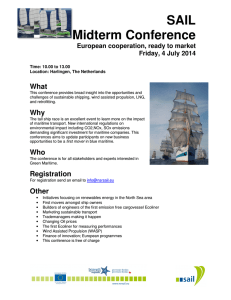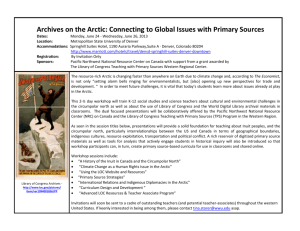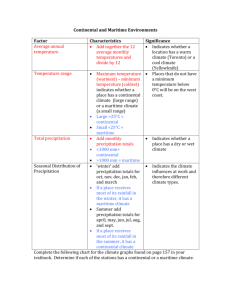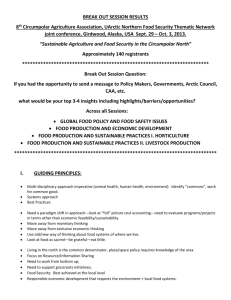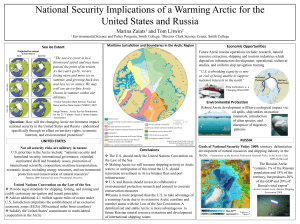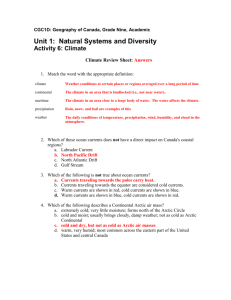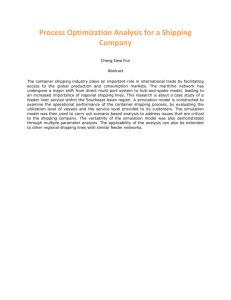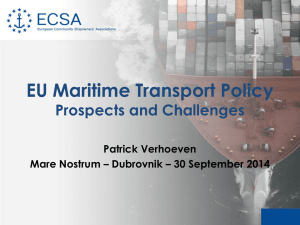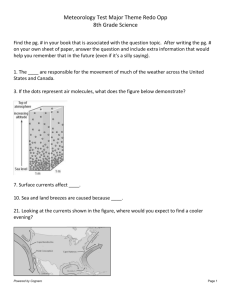assignment 10
advertisement
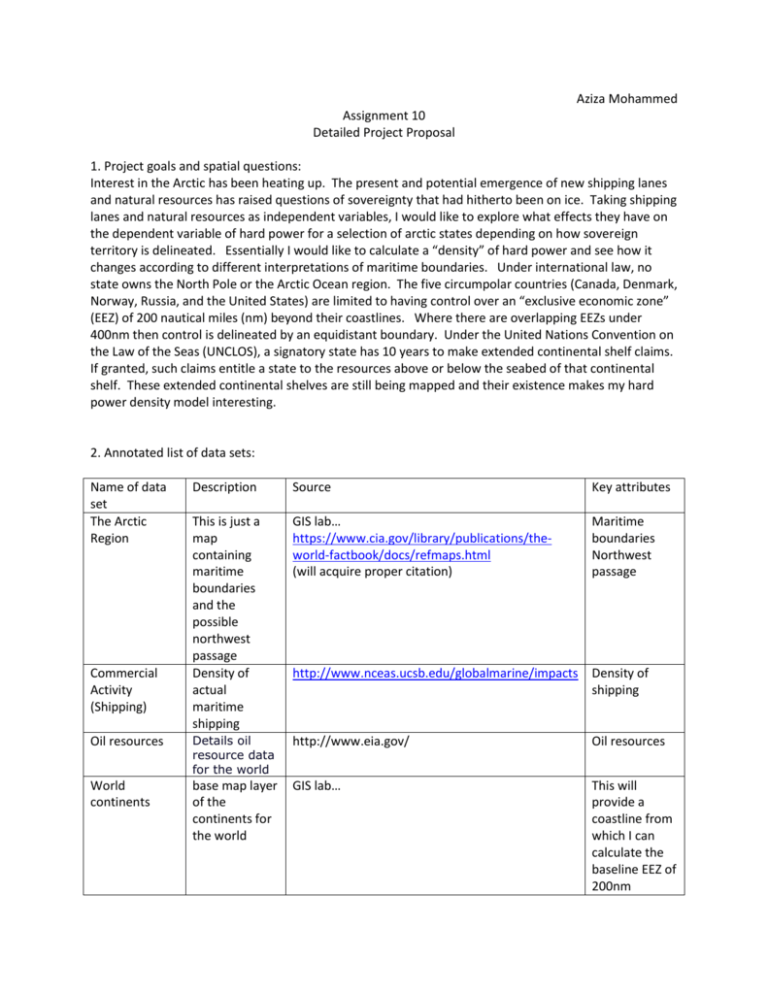
Aziza Mohammed Assignment 10 Detailed Project Proposal 1. Project goals and spatial questions: Interest in the Arctic has been heating up. The present and potential emergence of new shipping lanes and natural resources has raised questions of sovereignty that had hitherto been on ice. Taking shipping lanes and natural resources as independent variables, I would like to explore what effects they have on the dependent variable of hard power for a selection of arctic states depending on how sovereign territory is delineated. Essentially I would like to calculate a “density” of hard power and see how it changes according to different interpretations of maritime boundaries. Under international law, no state owns the North Pole or the Arctic Ocean region. The five circumpolar countries (Canada, Denmark, Norway, Russia, and the United States) are limited to having control over an “exclusive economic zone” (EEZ) of 200 nautical miles (nm) beyond their coastlines. Where there are overlapping EEZs under 400nm then control is delineated by an equidistant boundary. Under the United Nations Convention on the Law of the Seas (UNCLOS), a signatory state has 10 years to make extended continental shelf claims. If granted, such claims entitle a state to the resources above or below the seabed of that continental shelf. These extended continental shelves are still being mapped and their existence makes my hard power density model interesting. 2. Annotated list of data sets: Name of data set The Arctic Region Description Source Key attributes This is just a map containing maritime boundaries and the possible northwest passage Density of actual maritime shipping GIS lab… https://www.cia.gov/library/publications/theworld-factbook/docs/refmaps.html (will acquire proper citation) Maritime boundaries Northwest passage Oil resources Details oil resource data for the world http://www.eia.gov/ Oil resources World continents base map layer of the continents for the world GIS lab… This will provide a coastline from which I can calculate the baseline EEZ of 200nm Commercial Activity (Shipping) http://www.nceas.ucsb.edu/globalmarine/impacts Density of shipping 3. Process chart 1. 2. 3. •Reproject all of my layers into WGS 1984 Arctic Polar Stereographic •Georeference Arctic Region Map to create northwest passage layer and extended continental shelf layer •Create a buffer zone from the coastline of each of the circumpolar states to 200 nm to show EEZ. This is the foundation of my baseline hard power density calculation. I must have a separate buffer zone to allow analysis of the hard power under each state's control. •Create a buffer zone between the coastline and the extended continental shelf of each state to show the potential hard power density. •Calculate baseline hard power density. This can be done by creating a suitability map through raster-based overlay analysis. Hard power is calculated by: oil resources, control over shipping (economic power), and area of territory controlled (watery though it may be). •Set the extent and snap raster so that everything will match up to my world continents data set. •Create an oil resources preference grid •Create a shipping data density preference grid • For each of the above, bigger is better! •I'm not sure how to incorporate the northwest passage into this step •Next use the raster calculator to show where are the highest densities of hard power •The buffer zones are used to help show within which maritime boundary is the highest hard power density for each circumpolar state. Depending on how the density changes under each set of maritime boundaries, states may be more amenable to ratifying UNCLOS. This calculation can provide material for an illumating commentary on changes and power shifts in the international system to come.
